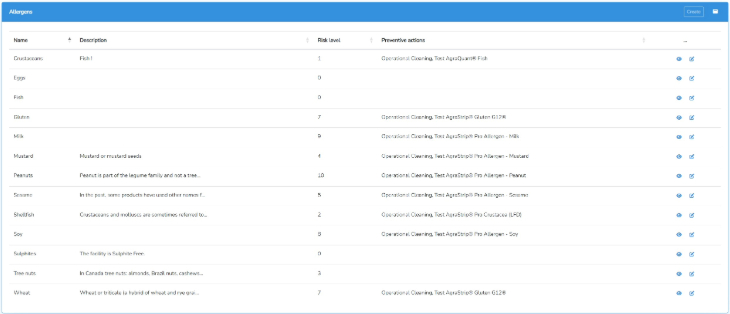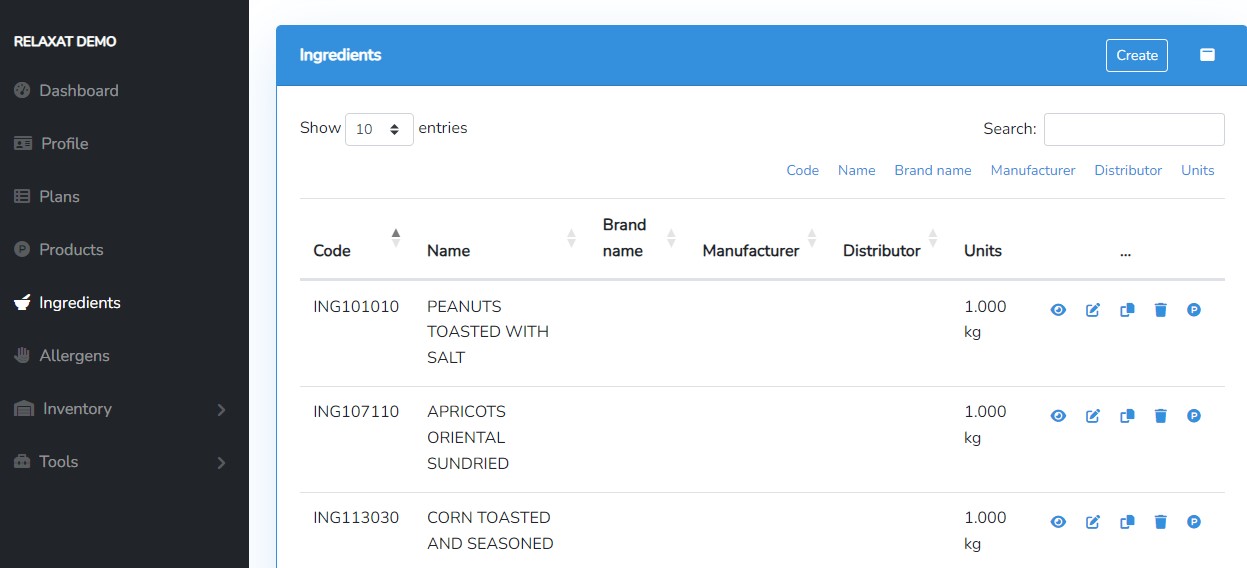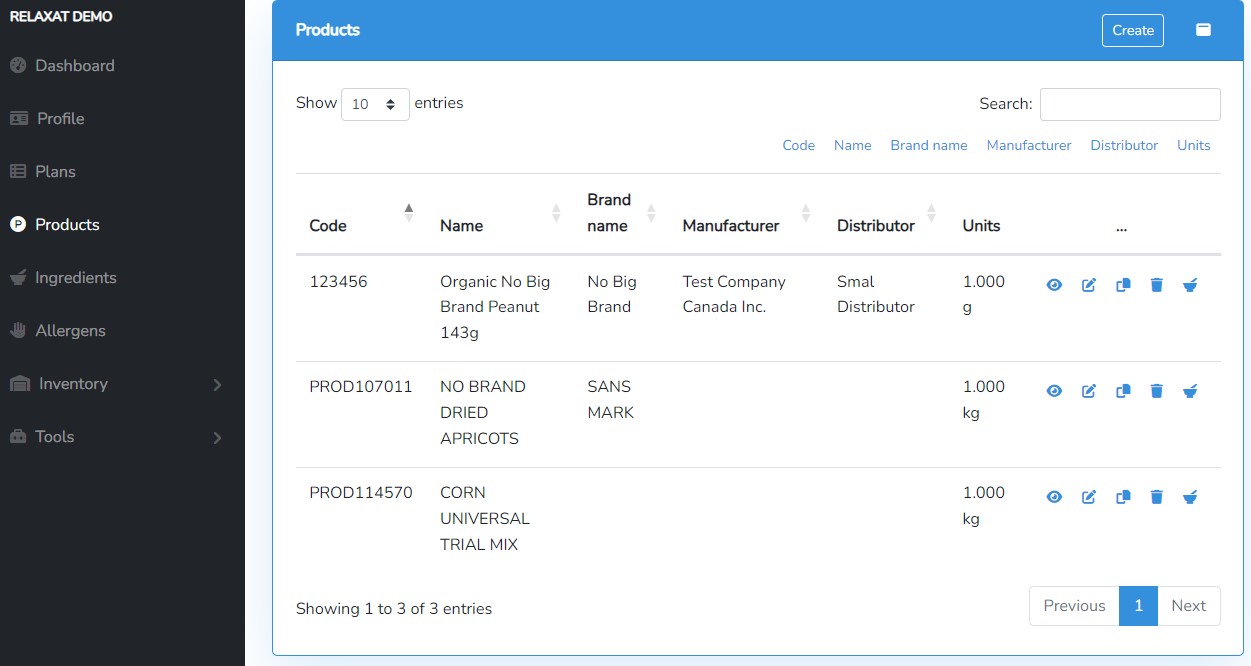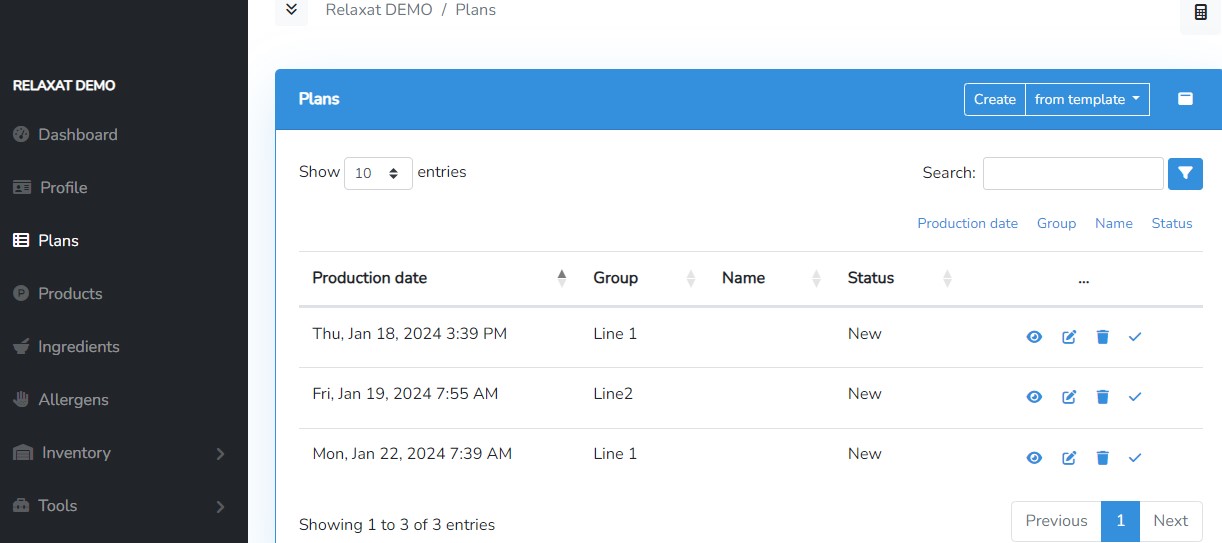CHOOSE YOUR APP

Improving
allergen management
starts with the Production Planning and Sequencing.The primary purpose of allergen sequencing is to minimize the number of clean downs required for product changeover, thereby enhancing operational efficiency and reducing the risk of cross-contamination.
BASIC FEATURES ALLOW
To reduce the risk of cross-contamination of allergens in the production area, begin with a thorough deep cleaning using products that do not contain any allergens.
ADVANCED
7apps is specifically designed to offer a software-based Allergen Management Program that aligns with your company's Allergen Control Policy, eliminating (or at least reducing considerably) the need for handwritten records or paper-based systems.
FROM NONE TO ONE
Progressively introduce products with mild allergens and strategically schedule production runs to minimize the need for equipment cleaning and changeover between products containing different allergens.
ALLERGEN TRAINING
Effective allergen risk mitigation encompasses various strategies, including thorough ingredient sourcing and supplier verification, segregated production lines, robust cleaning and sanitation protocols, and comprehensive staff training on allergen management.
COMPLEXITY DOESN'T HAVE BE SCARY
By following this approach, gradually incorporate products with more allergens until eventually reaching those containing the most severe allergens. Example of sequence generated and optimized with our application.
VALIDATION
Carefully review changeover scenarios to identify appropriate test locations, add the actions to the Planner. Ensure validation through comprehensive studies.
DON'T THINK, BEGIN TODAY!

Allergens are substances that can cause allergic reactions in certain individuals, and the presence of allergens in food products can have serious health implications for those with allergies. Therefore, it is essential for food manufacturers to implement effective strategies to mitigate the risk of allergen-related incidents. Optimizing Allergen Management in Food Production In today's food manufacturing and nutraceutical manufacturing industries, ensuring the safety and quality of products is paramount. One critical aspect of this is effective allergen management. Utilizing advanced allergen management software, businesses can streamline their processes and minimize the risks associated with allergen cross-contamination. Allergen Profile Analysis Software plays a crucial role in identifying and tracking allergenic ingredients throughout the production lifecycle. By building comprehensive allergen profiles of finished goods, companies can ensure that their products meet stringent safety standards. This software includes formula and recipe management tools that provide detailed insights into the allergen content of each ingredient, enabling precise control over the production process. To further enhance safety, production sequence optimization is essential. By generating production sequences that minimize the risks of allergen cross-contamination, businesses can protect consumers and maintain compliance with allergen control policies. Cross-contamination prevention software is designed to identify potential hazards and implement preventive measures, ensuring a safe production environment. In the food industry, allergen tracking software is indispensable for monitoring allergenic ingredients and maintaining accurate records. This software helps in the ingredient allergen tracking process, providing real-time data and alerts to prevent contamination. Additionally, recipe management tools offer a systematic approach to managing recipes and formulas, ensuring consistency and safety in every batch. For businesses aiming to automate their allergen control programs, allergen control program automation tools are available. These tools streamline the management of allergen profiles, compliance policies, and production sequences, reducing manual effort and enhancing efficiency. Finished goods allergen profile software ensures that the final products are safe for consumption and meet regulatory requirements. Overall, food safety software and allergen control software are vital for maintaining high standards in food production. By leveraging these technologies, businesses can achieve production lifecycle management and allergen risk minimization, ensuring that their products are safe, compliant, and of the highest quality.
BASIC FEATURES

Identifying and sequencing the production of allergenic ingredients can minimize the need for equipment cleaning and changeover between products containing different allergens. The simplest way to achieve the allergen control is by incorporating the allergen profiles into all the materials (ex. raw materials, ingredients, packaging, etc.) and all the recipes that will be further used in the production scheduling by the planning department.
We've created a wizzard to help you set up the planning app.

First: Allergens
Severe allergic reactions, such as anaphylaxis, occur when the body's immune system strongly reacts to a specific allergenic protein or irritant. These reactions can be triggered by food, insect stings, and medications. In Canada, Health Canada, the Canadian Food Inspection Agency (CFIA), allergy associations, and the medical community have identified the key substances most frequently associated with food allergies and allergic-type reactions. These substances are often referred to as priority food allergens. Health Canada and CFIA have created a series of pamphlets with information for consumers about each of these priority allergens:
- Eggs
- Milk
- Mustard
- Peanuts
- Crustaceans and molluscs
- Fish
- Sesame seeds
- Soy
- Sulphites
- Tree Nuts
- Wheat and triticale

Second: Incoming material
Manufacturers should clearly identify allergen-containing ingredients using a system that effectively distinguishes between ingredients with different food allergen profiles. This could include the use of tags or color-coding on cases, pallets, or bags to alert personnel that these materials require special precautions and handling procedures throughout the establishment. Additionally, it is important to assess the likelihood of allergen cross-contact from processing aids, such as pan-release agents that may contain soy, in order to determine if special precautions and handling procedures are necessary.
VIEW EXAMPLES
Third: Finished Product(s)
Severe allergic reactions, such as anaphylaxis, occur when the body's immune system strongly reacts to a specific allergenic protein or irritant. These reactions can be triggered by food, insect stings, and medications. In Canada, Health Canada, the Canadian Food Inspection Agency (CFIA), allergy associations, and the medical community have identified the key substances most frequently associated with food allergies and allergic-type reactions. These substances are often referred to as priority food allergens. Health Canada and CFIA have created a series of pamphlets with information for consumers about each of these priority allergens:
VIEW EXAMPLES
Fourth: Production planning
Production planning shall be scheduled in a sequence to exclude errors that result in the unintentional presence of an allergen from a product produced earlier.
If the same production area is used for foods with different allergen profiles, it is recommended to implement production scheduling to separate the manufacture of products with different food allergen profiles by time. For example, process foods that do not contain allergens before foods with allergens. In some cases, production schedules could be established so that products without allergens are handled at the beginning of the schedule, followed by products containing the same food allergen profile, and then products with different allergen profiles. This sequential production arrangement reduces the potential for allergen cross-contact, for instance, all frozen desserts containing only milk are processed before those containing both milk and egg. Where possible, allergenic ingredients should be added as late in the production process as possible, or as far downstream as possible in the processing line (e.g. closest to the filling and packaging equipment), to minimize equipment contact with the allergen in the production area and facilitate cleaning, thus preventing or minimizing potential allergen cross-contact.
VIEW EXAMPLESALLERGEN(S) SCHEDULE

If the same production area or production line is used for foods with different allergen profiles, manufacturers should, where feasible, implement production scheduling to separate the manufacture of products with different food allergen profiles by time. For example, process foods that do not contain allergens before foods with allergens.
| Product 1 | Contains: Soy | - | Contains: Wheat | Contains: Wheat, Milk | Contains: Milk, Soy |
No - Cleaning Yes - QC Visual Inspection No - Test SWAB |
| Product 2 | Contains: Soy, Peanut | Contains: Milk, Sesame | Contains: Wheat, Almond | Contains: Wheat, Milk | Contains: Milk, Soy, Pecan |
No - Cleaning Yes - QC Visual Inspection No - Test SWAB |
| Product 3 | Contains: Soy, Peanut, Milk | Contains: Milk, Sesame, Cashew | Contains: Wheat, Almond, Peanut | Contains: Wheat, Milk, Almond | Contains: Milk, Soy, Pistachios |
No - Cleaning Yes - QC Visual Inspection Yes - Test SWAB |
| Product 4 | Contains: Soy, Peanut | Contains: Milk, Sesame, Almond | Contains: Soy, Peanut, Milk | Contains: Sesame, Milk, Almond | Contains: Milk, Soy, Almond, Pecan |
No - Cleaning Yes - QC Visual Inspection No - Test SWAB |
EXPERTS FEEDBACK

Feedback from expert panels is invaluable for making informed decisions. It offers diverse perspectives, valuable insights, and solid evidence, ultimately leading to better decision-making.

Director of Operations
"Our company, Sager Foods has dedicated lines for the two allergens present in the product (walnut, coconut, and sesame virgin oils). The allergen module did not provide significant value to our process. Nevertheless, to prevent cross-contamination and unintentional adulteration, we have implemented an Oils Flush Matrix. This has been successfully integrated into the 7apps "ACTIONS" module, resulting in a reduction in the frequency of flushes, the amount of oil being flushed, and the downtime of our machines."

Co-founder
"At Katea we have leveraged the application to streamline packaging scheduling and manage allergens. In collaboration with the Relaxat team, we have integrated visual scanners for real-time production tracking and in-depth data analysis. This initiative has led to a remarkable increase in productivity."

Business Owner
"At Bramac, I have been using this production scheduling software to manage the manufacturing process of our products with different food allergen profiles, and I must say it has made my job so much easier. The ability to separate and schedule production runs based on allergen profiles has been a huge advantage for our operations. Overall, this software has been instrumental in helping us meet regulatory requirements and maintain the trust of our customers with food allergies. I highly recommend it to any company dealing with complex production scheduling in the food industry."